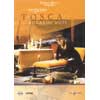Puccini Tosca
Compelling drama from beginning to end, with conductor Muti the hero of the hour
View record and artist detailsRecord and Artist Details
Composer or Director: Giacomo Puccini
Genre:
DVD
Label: TDK
Magazine Review Date: 5/2003
Media Format: Digital Versatile Disc
Media Runtime: 121
Mastering:
Stereo
Catalogue Number: DV-OPTOS

Tracks:
| Composition | Artist Credit |
|---|---|
| Tosca |
Giacomo Puccini, Composer
Alfredo Mariotti, Sacristan, Bass Ernesto Gavazzi, Spoletta, Tenor Ernesto Panariello, Gaoler, Bass Giacomo Puccini, Composer Giovanni Battista Parodi, Angelotti, Bass Leo Nucci, Scarpia, Baritone Maria Guleghina, Tosca, Soprano Milan La Scala Chorus Milan La Scala Orchestra Riccardo Muti, Conductor, Bass Salvatore Licitra, Cavaradossi, Tenor Silvestro Sammaritano, Sciarrone, Bass Virginia Barchi, Shepherd Boy, Treble/boy soprano |
Author: Edward Greenfield
In March 2000 Riccardo Muti conducted a staged performance of Tosca for the first time, only the second Puccini opera he had conducted at La Scala. As this live-recorded DVD powerfully reveals, he emerged as the hero of a great occasion (the CD version was reviewed in June 2001). The high-voltage electricity is unflagging, with the drama timed to perfection, the whole magnetically compelling from first to last. It makes one regret that he has so rarely turned to Puccini. Even so, having been the music director at La Scala since 1986, he knows unerringly how to pace his singers, letting them phrase expansively where needed, yet holding the structure firmly together.
Maria Guleghina makes a formidable Tosca, very believable in her jealousy, using a rich tonal range, with just a touch of vinegar at the top. She is at her finest in the great scene with Scarpia in Act 2, leading up to a radiant account of ‘Vissi d’arte’ and a chilling murder, even though the very ordinary dinner-knife she uses looks an unlikely weapon. The veteran Leo Nucci, tall, thin and mean, is most compelling as the police chief, at times a smiling villain, though the voice has its occasional roughness. As Cavaradossi, Salvatore Licitra may be an unromantic figure, and he is heavy-handed at the start in ‘Recondita armonia’, but he develops from there, and in Act 3 he sings superbly with fine shading of tone for ‘E lucevan le stelle’ and the duet with Tosca.
Luca Ronconi’s production, well-directed for television by Pierre Cavasillas, consistently heightens the dramatic conflicts. In period it is updated by roughly half a century from the Napoleonic era, with handsome costumes by Vera Marzot. The sets of Margherita Palli, as redesigned by Lorenza Cantini, bring a surreal contradiction between realism and fantasy, looking like conventional sets that have been hit by an earthquake, with uprights at all angles. Sections of scenery are retained from act to act, with an increasing pile of debris left behind. That makes the battlements of the Castel Sant’Angelo look like a bomb-site, which Tosca has to climb before flinging herself to her death. The idea, presumably, is to reflect the distorted mind of Scarpia, though in this verismo opera pure realism might be said to work best of all.
Maria Guleghina makes a formidable Tosca, very believable in her jealousy, using a rich tonal range, with just a touch of vinegar at the top. She is at her finest in the great scene with Scarpia in Act 2, leading up to a radiant account of ‘Vissi d’arte’ and a chilling murder, even though the very ordinary dinner-knife she uses looks an unlikely weapon. The veteran Leo Nucci, tall, thin and mean, is most compelling as the police chief, at times a smiling villain, though the voice has its occasional roughness. As Cavaradossi, Salvatore Licitra may be an unromantic figure, and he is heavy-handed at the start in ‘Recondita armonia’, but he develops from there, and in Act 3 he sings superbly with fine shading of tone for ‘E lucevan le stelle’ and the duet with Tosca.
Luca Ronconi’s production, well-directed for television by Pierre Cavasillas, consistently heightens the dramatic conflicts. In period it is updated by roughly half a century from the Napoleonic era, with handsome costumes by Vera Marzot. The sets of Margherita Palli, as redesigned by Lorenza Cantini, bring a surreal contradiction between realism and fantasy, looking like conventional sets that have been hit by an earthquake, with uprights at all angles. Sections of scenery are retained from act to act, with an increasing pile of debris left behind. That makes the battlements of the Castel Sant’Angelo look like a bomb-site, which Tosca has to climb before flinging herself to her death. The idea, presumably, is to reflect the distorted mind of Scarpia, though in this verismo opera pure realism might be said to work best of all.
Discover the world's largest classical music catalogue with Presto Music.

Gramophone Digital Club
- Digital Edition
- Digital Archive
- Reviews Database
- Full website access
From £8.75 / month
Subscribe
Gramophone Full Club
- Print Edition
- Digital Edition
- Digital Archive
- Reviews Database
- Full website access
From £11.00 / month
Subscribe
If you are a library, university or other organisation that would be interested in an institutional subscription to Gramophone please click here for further information.




